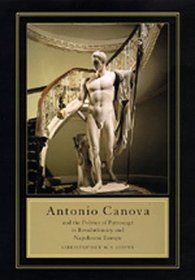Search -
Antonio Canova and the Politics of Patronage in Revolutionary and Napoleonic Europe
Antonio Canova and the Politics of Patronage in Revolutionary and Napoleonic Europe
Author:
The Venetian sculptor Antonio Canova (1757-1822) was Europe's most celebrated artist from the end of the ancien rgime to the early years of the Restoration, an era when the traditional relationship between patrons and artists changed drastically. Christopher M. S. Johns's refreshingly original study explores a neglected facet of Canova's... more »
Author:
The Venetian sculptor Antonio Canova (1757-1822) was Europe's most celebrated artist from the end of the ancien rgime to the early years of the Restoration, an era when the traditional relationship between patrons and artists changed drastically. Christopher M. S. Johns's refreshingly original study explores a neglected facet of Canova's... more »
ISBN-13: 9780520212015
ISBN-10: 0520212010
Publication Date: 10/1/1998
Pages: 271
Rating: ?
ISBN-10: 0520212010
Publication Date: 10/1/1998
Pages: 271
Rating: ?
0 stars, based on 0 rating
Publisher: University of California Press
Book Type: Hardcover
Members Wishing: 0
Reviews: Amazon | Write a Review
Book Type: Hardcover
Members Wishing: 0
Reviews: Amazon | Write a Review
Genres:
- Arts & Photography >> History & Criticism >> Schools, Periods & Styles >> Neoclassical
- Arts & Photography >> History & Criticism >> Regional >> European
- Arts & Photography >> Individual Artists >> ( A-C ) >> Canova, Antonio
- Arts & Photography >> Art >> Sculpture >> General
- Arts & Photography >> Individual Artists >> General




